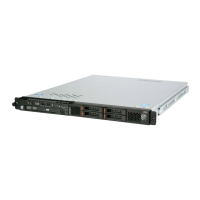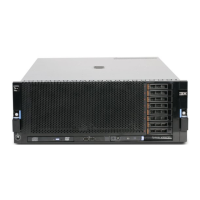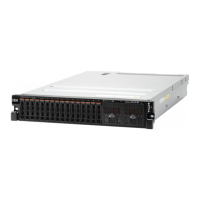Chapter 3. Diagnostics
This chapter describes the diagnostic tools that are available to help you solve problems that might occur in
the server.
If you cannot locate and correct a problem by using the information in this chapter, see
Appendix A “Getting
help and technical assistance” on page 535
for more information.
Diagnostic tools
The section introduces available tools to help you diagnose and solve hardware-related problems.
• Light path diagnostics: Use light path diagnostics to diagnose system errors quickly. See
“Light path
diagnostics” on page 381
for more information.
• Dynamic System Analysis (DSA) Preboot diagnostic programs: The DSA Preboot diagnostic programs
provide problem isolation, configuration analysis, and error log collection. The diagnostic programs are
the primary method of testing the major components of the server and are stored in integrated USB
memory. The diagnostic programs collect the following information about the server:
– System configuration
– Network interfaces and settings
– Installed hardware
– Light path diagnostics status
– Service processor status and configuration
– Vital product data, firmware, and UEFI configuration
– Hard disk drive health
– RAID controller configuration
– Controller and service processor event logs, including the following information:
– System error logs
– Temperature, voltage, and fan speed information
– Self-monitoring Analysis, and Reporting Technology (SMART) data
– Machine check registers
– USB information
– Monitor configuration information
– PCI slot information
The diagnostic programs create a merged log that includes events from all collected logs. The information
is collected into a file that you can send to IBM service and support. Additionally, you can view the server
information locally through a generated text report file. You can also copy the log to removable media and
view the log from a web browser. See
“Running the diagnostic programs” on page 318 for more
information.
• Troubleshooting tables: These tables list problem symptoms and actions to correct the problems. See
“Troubleshooting tables” on page 360 for more information.
• IBM Electronic Service Agent: IBM Electronic Service Agent is a software tool that monitors the server
for hardware error events and automatically submits electronic service requests to IBM service and
support. In addition, it can collect and transmit system configuration information on a scheduled basis so
that the information is available to you and your support representative. It uses minimal system resources,
and is available free of charge. For more information and to download IBM Electronic Service Agent, go to
http://www.ibm.com/support/entry/portal/Open_service_request/.
• POST error codes and event logs: The power-on self-test (POST) generates messages to indicate
successful test completion or the detection of a problem. For more information, see
“Event logs” on page
26 and “POST” on page 305.
© Copyright Lenovo 2014, 2023 25

